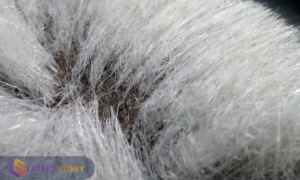Introduction: The Fascination with Bear Skin
For centuries, bear skin has held cultural, practical, and symbolic significance in various societies. From ancient warriors wearing bear pelts as a sign of strength to modern uses in rugs, clothing, and taxidermy, the versatility of animal skin has made it a valuable resource.
But what exactly makes bear skin so unique? Is it ethical to use? And how does it compare to other animal skins? In this article, we’ll explore the history, properties, uses, and ethical considerations surrounding bear skin in a well-researched and engaging manner.
What Makes Bear Skin Unique?
Bear skin stands out due to its thick fur, durability, and insulating properties. Unlike other animal skins, bear pelts provide exceptional warmth, making them highly sought after in colder regions.
Key Characteristics of Bear Skin:
Thickness – Bears have two layers of fur: a dense undercoat and a coarse outer layer.
Water Resistance – Natural oils in the skin repel water, keeping the pelt dry.
Soft and Warm – Ideal for making winter clothing and blankets.
Durability – Properly treated bear skin can last for decades.
Different species of bears provide slightly varying skin textures. For example:
- Grizzly bear skin is thicker and rougher.
- Black bear skin is softer and more commonly used in fashion.
- Polar bear skins has unique insulation properties, making it prized in Arctic regions.
Historical and Cultural Significance of Bear Skin
Bear Skin in Indigenous Cultures
Indigenous tribes across North America, Siberia, and Scandinavia have used bear skin for clothing, rituals, and shelter. In Native American traditions, wearing bear pelts symbolized strength, courage, and a connection to the spirit world. Shamans often used bear skin robes during spiritual ceremonies.

Bear Pelts in European History

Bear Pelts in European History
In medieval Europe, bear skin was a symbol of nobility. Warriors and kings would adorn bear fur cloaks to showcase their power. In Norse mythology, Berserkers (fierce Viking warriors) were said to wear bear skins in battle, believing it granted them supernatural strength.
Bear Skin in Modern Society
Today, bear skin is used in fashion, décor, and ceremonial garments. The Queen’s Guard in the UK still wears bear skins hats, a tradition dating back to the Napoleonic Wars.
Common Uses of Bear Skin
1. Clothing and Fashion
- Bear skins coats, vests, and gloves offer superior insulation.
- Traditional hunters and Arctic dwellers use bear skin boots for warmth.
2. Rugs and Home Décor
- Bear skins rugs are a luxury item in cabins and lodges.
- Taxidermists preserve bear pelts for decorative purposes.
3. Cultural and Traditional Uses
- Many tribes and reenactors use bear skin cloaks in ceremonies.
- Some martial arts and sports teams adopt bear skins imagery as a symbol of strength.
4. Survival Gear and Utility
- In extreme climates, bear skins sleeping bags offer warmth.
- Old traditions include using bear fat from the skin for waterproofing leather and tools.
Ethical Considerations and Sustainability
The use of bear skins raises ethical questions about conservation, hunting, and responsible sourcing.
Is It Legal to Own Bear Skin?
In some countries, bear hunting is regulated, allowing for controlled use of bear pelts.
In others, buying and selling bear skins is strictly prohibited to protect endangered species.
Ethically Sourced Bear Skin
To ensure ethical use, buyers should:
- Verify legality – Check regulations in their country.
- Source from sustainable programs – Many regions have wildlife management plans that prevent overhunting.
- Support Indigenous artisans – Some tribes ethically source and craft bear skin products as part of their heritage.
How to Care for Bear Skin
To maintain bears skin, follow these care tips:
Cleaning:
✔ Brush the fur regularly to prevent matting.
✔ Use a damp cloth to clean dust and debris.
Storage:
✔ Keep in a cool, dry place to avoid mold.
✔ Avoid direct sunlight to prevent fading.

Preservation:
✔ Taxidermists use tanning methods to keep the skin soft.
✔ Professional cleaning every few years extends longevity.
Comparison: Bear Skin vs. Other Animal Skins
| Feature | Bear Skin | Cowhide | Sheepskin | Deer Skin |
|---|---|---|---|---|
| Durability | ✅ High | ✅ High | ❌ Medium | ✅ Medium |
| Warmth | ✅ Excellent | ❌ Moderate | ✅ Good | ✅ Good |
| Softness | ✅ Soft | ❌ Tough | ✅ Very Soft | ✅ Soft |
| Water Resistance | ✅ Natural Oils | ❌ Not Water-Resistant | ✅ Somewhat Water-Resistant | ✅ Somewhat Water-Resistant |
| Uses | Rugs, Coats, Decor | Leather, Furniture | Clothing, Bedding | Clothing, Accessories |
FAQs
1. Is bear skins legal to buy?
It depends on your country’s laws. Some regions allow regulated trade, while others ban it.
2. What is bear skins used for today?
Bear skins is used for coats, rugs, ceremonial clothing, and survival gear in cold regions.
3. How do I clean a bear skins rug?
Use a soft brush, vacuum lightly, and store in a dry area to prevent damage.
4. Is bear skins warmer than other animal skins?
Yes! Bear skins has two layers of fur, making it one of the warmest animal skins.
5. Can bear skins be ethically sourced?
Yes, through wildlife conservation programs and Indigenous communities that respect traditional practices.
6. Why do the Queen’s Guards wear bear skin hats?
The British military adopted bear skins hats in the 19th century as a sign of power.
7. How long does bear skins last?
With proper care, bears skin can last for decades without deteriorating.
8. Is bear skins waterproof?
Yes, it contains natural oils that make it resistant to water.
9. What is the softest type of bear skins?
Black bear skins is known for being softer and more flexible than other species.
10. Can I wear bear skins in everyday fashion?
While rare, some high-end designers use bear skins in winter wear for extreme cold.
Conclusion
Bear skins remains one of the most fascinating and versatile animal skins, with deep cultural roots and practical uses. Whether used for fashion, decoration, or survival, its durability and warmth make it a prized material.
However, it’s essential to source bears skin ethically to ensure wildlife conservation and respect for traditional practices. If you’re interested in owning or learning more about bears skin, always check legal and ethical guidelines in your country.
Would you ever consider using bear skins for clothing or décor? Let us know your thoughts!






